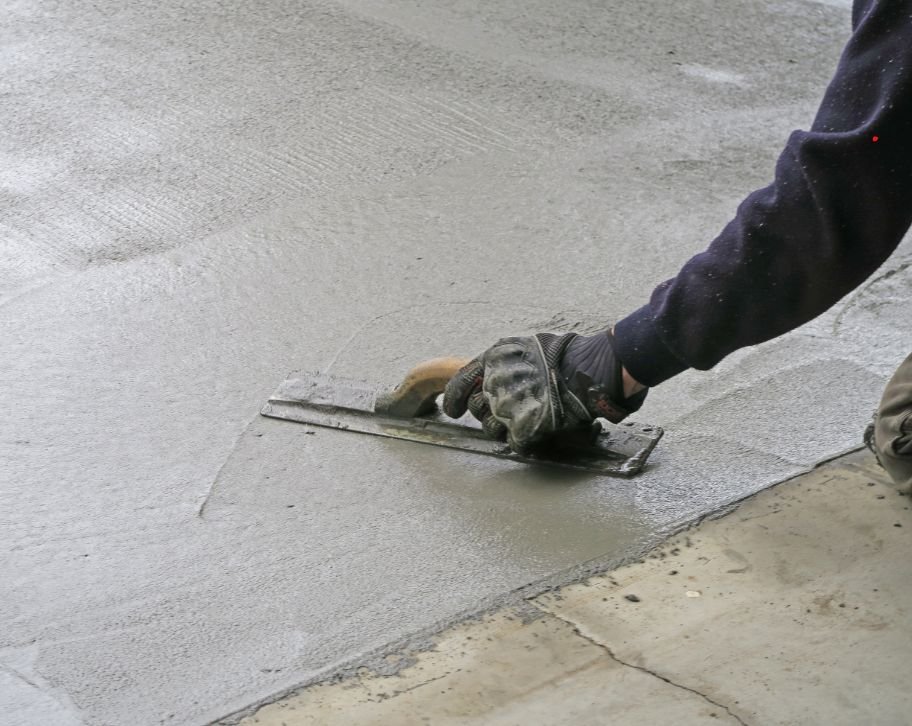Pitted concrete can sneak up on you after a harsh Fredericton winter. Wondering if you need to start from scratch or just patch things up? Those unsightly holes and depressions in your garage floor not only look terrible but can also lead to more serious structural issues if left untreated, potentially costing you thousands in repairs.
The good news is that most pitted concrete garage floors can be successfully repaired using various techniques, from simple patching to complete resurfacing. The key lies in properly assessing the damage extent and choosing the right repair method, which we’ll explore in detail throughout this guide.

Your pitted garage floor might look beyond repair, but don’t lose hope! Many concrete surfaces can be restored with the right approach. Before diving into repair work, you’ll need to evaluate your floor’s condition carefully.
The success of your garage floor project depends on understanding what caused the damage. Road salt, freeze-thaw cycles, or improper finishing techniques can create different types of deterioration. Some pitted floors might need simple patching, while others require complete resurfacing.
Here’s how to check if your floor needs repair:
Remember to identify underlying moisture issues before starting repairs. Ignoring these problems could lead to future concrete pitting, even after fixing the current damage.
Before starting repairs, walk through your garage and carefully map out all damaged areas. Take photos and measure pit depths with a ruler. This helps determine the repair materials needed and creates a clear plan of action.
Getting your floor spotless is crucial for repair success. Start by removing all debris with a heavy-duty vacuum. Tackle those stubborn grease spots with a strong alkaline cleaner. Finish with pressure washing to ensure every speck of dirt is gone, but remember to let it dry completely.
For minor pitting, an acid etching solution can create the perfect surface for repairs. However, deeper pits need mechanical grinding to ensure proper bonding. Choose your method based on pit depth and damage severity. This step is crucial for making sure your repairs stick around for the long haul.
For minimal damage and shallow pits, concrete resurfacer provides an excellent solution. This thin overlay, typically 1/8 to 1/4 inch thick, can effectively cover minor imperfections. Multiple coats might be necessary for a smooth, even finish.
When dealing with moderate damage or oil-stained areas, epoxy fillers mixed with sand offer great durability. These work particularly well for pits deeper than 1/4 inch and can be textured to match the surrounding concrete surface perfectly.
For isolated deep pits exceeding 1/2 inch, mortar-based repairs are essential. The process begins with careful chiseling of damaged areas to create a clean bonding surface. This method provides a strong, long-lasting solution for severe localized damage.
When facing widespread damage, structural overlays thicker than 1 inch might be necessary.
For less severe but extensive surface damage, polishing can be a viable cosmetic solution. These methods address large-scale problems while maintaining the floor’s integrity.
When your garage floor shows exposed rebar or cracks wider than 1/8 inch, it’s a red flag for serious structural problems. Uneven settling of the concrete indicates foundation issues that can’t be fixed with foundation repairs. These conditions make replacement the only safe and viable option for maintaining your garage’s integrity.
If more than half of your floor shows deep pitting exceeding 1/2 inch, repairs become impractical. At this point, patching and resurfacing won’t provide a lasting solution. The extensive nature of such damage typically means the concrete has deteriorated beyond repair.
Persistent water issues, evidenced by white mineral deposits (efflorescence) or constant seepage, indicate serious underlying problems. When moisture continuously undermines repair attempts, it’s time to consider full concrete replacement. These issues often signal deeper drainage problems that need addressing.
Compare the costs of repeated repairs versus a one-time replacement. While replacement seems expensive initially, multiple repair attempts can add up quickly. Consider the long-term value and durability of a new concrete floor against the ongoing expense of maintaining a deteriorating surface.
At Atlantic Brick and Stone, we understand that a pitted garage floor can be a major concern for homeowners. Our experienced team specializes in assessing and repairing concrete surfaces, offering solutions tailored to your specific situation.
We begin with a thorough evaluation of your floor’s condition, measuring pit depths and identifying underlying causes. Whether it’s freeze-thaw damage, chemical exposure, or wear and tear, we’ll determine the most effective repair strategy.
From minor surface treatments to complete resurfacing, we provide comprehensive solutions that ensure lasting results. Don’t let your pitted garage floor worsen – contact us for professional concrete repair services in Fredericton.
Yes, in most cases, pitted concrete can be resurfaced or patched using specialized repair products without needing full replacement.
If the pits are deep, widespread, or causing dust and crumbling, it’s best to consult a concrete repair specialist.
Repairing can stop current damage, but applying a protective coating or sealant afterward is key to preventing future pitting.
Most surface repairs can be completed in a day, though curing time for coatings or overlays can extend the process to 2–3 days.
GET STARTED
Create stunning structures with our residential and commercial masonry services in Fredericton. From meticulous designs to the completed build, our process is professional and rewarding, and we can’t wait to build your dream with you.
Atlantic Brick and Stone, one of the best masonry contractors in Fredericton, NB
Contact
8 Muskie Street, Lower Kingsclear, New Brunswick E3E 0E7, Canada